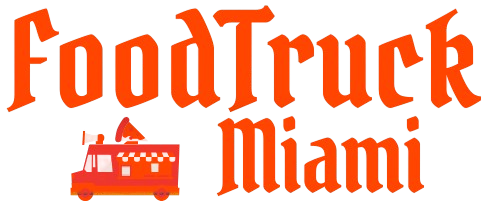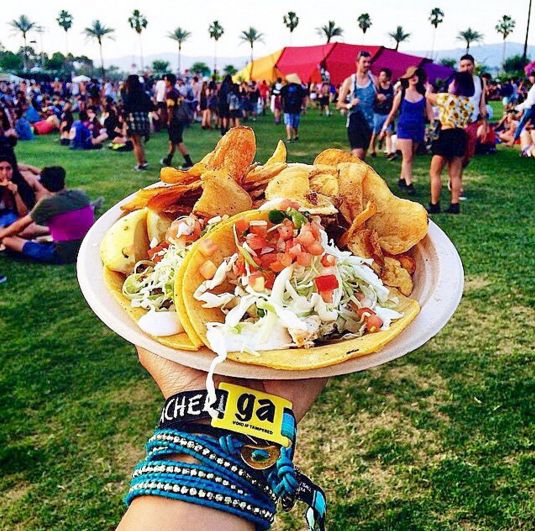Food Truck Industry
10 Essential Tips for Starting Your Own Food Truck Business
Food trucks have become a beloved part of the food landscape, offering innovative meals and a unique dining experience. If you’ve ever dreamed of starting your own food truck business, you’re not alone—many aspiring chefs and entrepreneurs are drawn to the idea of serving delicious food on the go. However, while starting a food truck business might sound exciting and glamorous, it’s essential to approach it with careful planning and preparation. From choosing the right truck to understanding the legalities, there are many factors that can make or break your food truck venture.
If you’re ready to take the leap and turn your food truck dream into reality, here are ten essential tips to help guide you on your journey.
1. Develop a Solid Business Plan
Like any business, starting a food truck requires a well-thought-out plan. A strong business plan serves as the foundation of your operation and helps you stay focused on your goals. It should cover all aspects of your business, including:
- Your menu and concept: What kind of food will you offer? Will you focus on a specific cuisine or offer a fusion of flavors?
- Target market: Who is your target audience? Are you catering to a specific demographic or offering something for everyone?
- Financial projections: What are your startup costs, operational costs, and expected revenue? How long will it take to break even?
- Marketing strategy: How will you promote your food truck to attract customers?
A well-structured business plan not only gives you direction but also helps you secure funding from investors or banks if needed.
2. Choose the Right Food Truck
The food truck itself is one of the most important investments you’ll make. You’ll need a truck that’s not only large enough to accommodate your kitchen equipment but also reliable and compliant with local health and safety regulations. Consider these factors when choosing a truck:
- Size and layout: Make sure the truck has enough space for your equipment and staff to work efficiently. You’ll also want to ensure there’s enough room for customer-facing elements (e.g., serving windows).
- Condition: If buying a used truck, make sure it’s in good condition and can handle the demands of daily operation. Consider the truck’s age, engine health, and any modifications needed to fit your equipment.
- Compliance: Research your local food truck regulations to ensure the truck meets health department and fire safety standards. This will include ventilation systems, electrical wiring, water tanks, and more.
You can either purchase a brand-new truck, buy a used one, or even convert a van into a food truck. Be sure to balance cost, condition, and suitability for your specific needs.
3. Create a Unique and Memorable Menu
The menu is the heart of your food truck business. It needs to be unique, flavorful, and consistent with your brand. A food truck allows for creativity, so think outside the box when designing your offerings. Here are a few things to consider:
- Niche: Find a niche or theme that sets you apart from other trucks. Whether it’s gourmet burgers, vegan tacos, or international fusion, your menu should stand out.
- Simplicity and efficiency: While creativity is key, the menu should be manageable. Focus on a few items that you can execute perfectly and quickly. Offering too many options can lead to long wait times and operational chaos.
- Seasonality and sourcing: Consider sourcing local, seasonal ingredients, which can elevate the quality of your dishes while supporting local farmers.
Ultimately, the key is to craft a menu that excites customers, makes your food truck unforgettable, and aligns with your vision as a chef or business owner.
4. Obtain the Necessary Permits and Licenses
Navigating the legalities of food truck operation is one of the trickiest aspects of starting a food truck business. Every city and state has its own set of regulations, and you must comply with them to operate legally. Some of the permits and licenses you’ll need include:
- Food establishment permits: This is often issued by your local health department after they inspect your truck’s kitchen setup.
- Business licenses: A general business license is required to legally run your food truck.
- Food handling certifications: You and your staff may need food safety training and certifications.
- Parking permits: Some cities require specific permits to park your food truck on public streets or in certain areas.
- Fire safety certifications: Food trucks often use cooking equipment that can pose a fire risk, so you’ll need to meet fire safety standards.
Before you begin, check with your local government to ensure you have all the necessary paperwork.
5. Understand Your Costs and Budget Wisely
Starting a food truck business comes with significant upfront costs. In addition to purchasing the truck and equipment, you’ll also need to budget for:
- Truck modifications and equipment: Costs can vary depending on whether you need to modify an existing truck or buy a new one. Kitchen equipment (grills, fryers, refrigerators) can add up quickly.
- Operating expenses: These include ingredients, gas, maintenance, employee wages, permits, and insurance.
- Marketing and branding: Investing in good signage, a website, and social media promotion is crucial for attracting customers.
Prepare a detailed budget and make sure you have enough funds to cover your startup costs and maintain the truck until it becomes profitable. Be aware that the first few months might not bring in profits, so having a financial cushion is important.
6. Find the Right Locations to Park Your Truck
Where you park your food truck can make or break your business. High-traffic areas with lots of foot traffic are ideal for food trucks, but competition can also be fierce. Consider the following when choosing your parking spots:
- Food truck parks: Many cities have designated areas where food trucks can park and sell their food. These parks are great for visibility and customer traffic.
- Events and festivals: Food trucks thrive at festivals, fairs, and other large events. These gatherings offer excellent opportunities to attract a crowd.
- Office districts or universities: Busy office complexes and college campuses can be lucrative spots for food trucks during lunch hours.
Don’t forget to check the local laws on food truck parking to ensure you’re allowed to park in your chosen locations.
7. Embrace Social Media and Digital Marketing
In today’s digital age, online presence is key to attracting customers. Social media platforms like Instagram, Facebook, and Twitter allow you to engage with your audience, share your food creations, and update customers on your truck’s location.
- Use Instagram for food photos: Post high-quality photos of your dishes to showcase their visual appeal. Instagram is especially effective for food trucks because it’s a visually-driven platform.
- Post your schedule and location: Keep your customers updated on where you’ll be each day, whether you’re at a food truck rally or parked in a specific neighborhood.
- Engage with your audience: Respond to comments, repost customer photos, and encourage people to share their experiences at your truck.
Having an active social media presence will help you build a loyal following and create buzz around your food truck.
8. Focus on Exceptional Customer Service
Great food is only part of the equation—excellent customer service is essential. Food truck customers often appreciate friendly, personalized service. You’re likely to have repeat customers, so building good relationships is important.
- Be friendly and approachable: Greet customers with a smile and offer recommendations.
- Speed and efficiency: Since food trucks often operate in fast-paced environments, customers value quick service, especially during busy lunch hours.
- Handle complaints professionally: If there’s a mistake or issue with an order, address it quickly and with empathy.
Creating a welcoming atmosphere and treating your customers like friends will keep them coming back for more.
9. Stay Organized and Keep Detailed Records
Running a food truck involves juggling multiple tasks, from managing inventory to tracking sales. Staying organized is crucial to ensuring smooth operations and financial health. Keep detailed records of:
- Daily sales: Track how much revenue you generate each day.
- Expenses: Record all purchases, from ingredients to gas and maintenance.
- Inventory: Monitor your inventory to avoid overstocking or running out of supplies.
Using accounting software can help simplify this process and ensure you stay on top of your finances.
10. Be Prepared to Adapt and Evolve
The food truck industry is constantly changing. Customer preferences evolve, new trends emerge, and competition is always high. To succeed, you need to be adaptable:
- Keep an eye on food trends: Stay current with new food trends and adjust your menu if needed.
- Adapt to feedback: Listen to customer feedback and make improvements based on their suggestions.
- Experiment with your menu: Occasionally introduce new items or limited-time specials to keep your menu fresh and exciting.
The more you’re able to innovate and adapt to market changes, the more likely your food truck will thrive in a competitive environment.
Conclusion
Starting your own food truck business can be an incredibly rewarding venture, but it’s not without its challenges. By following these essential tips—developing a solid business plan, choosing the right truck, obtaining necessary licenses, and focusing on customer service—you’ll be well on your way to creating a successful food truck operation. With dedication, creativity, and a bit of planning, you can turn your food truck dream into a thriving reality.


Hi, this is a comment.
To get started with moderating, editing, and deleting comments, please visit the Comments screen in the dashboard.
Commenter avatars come from Gravatar.